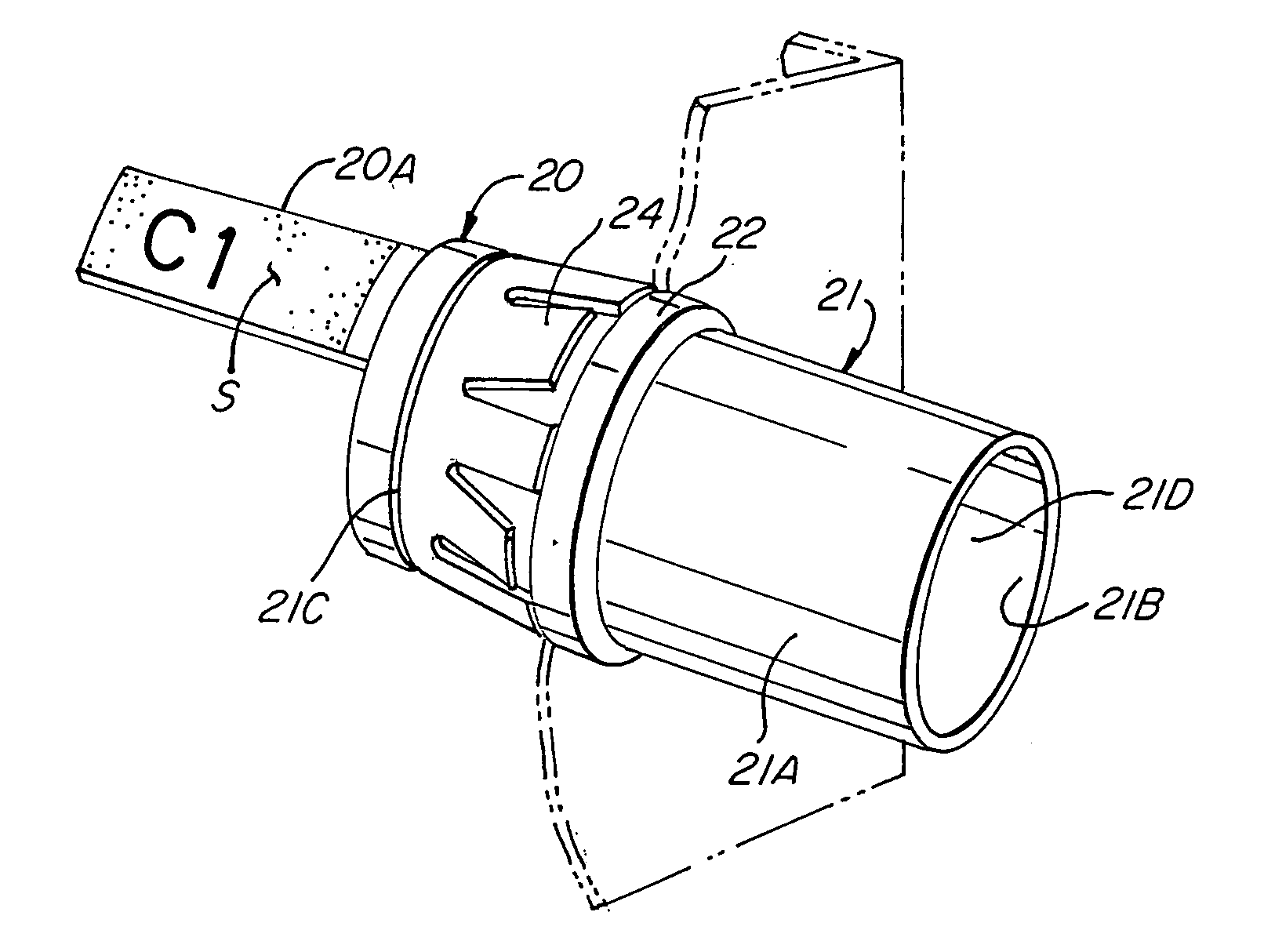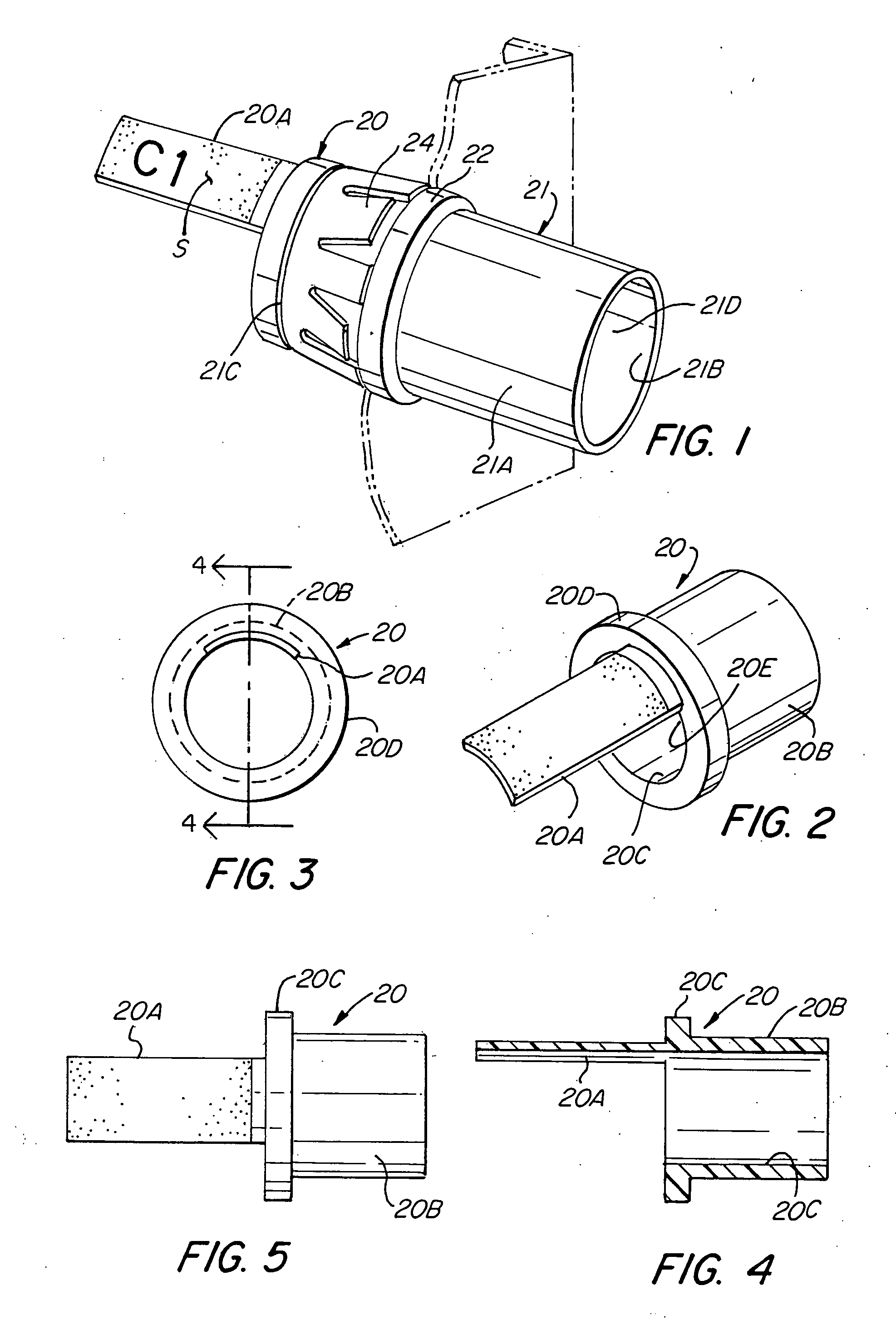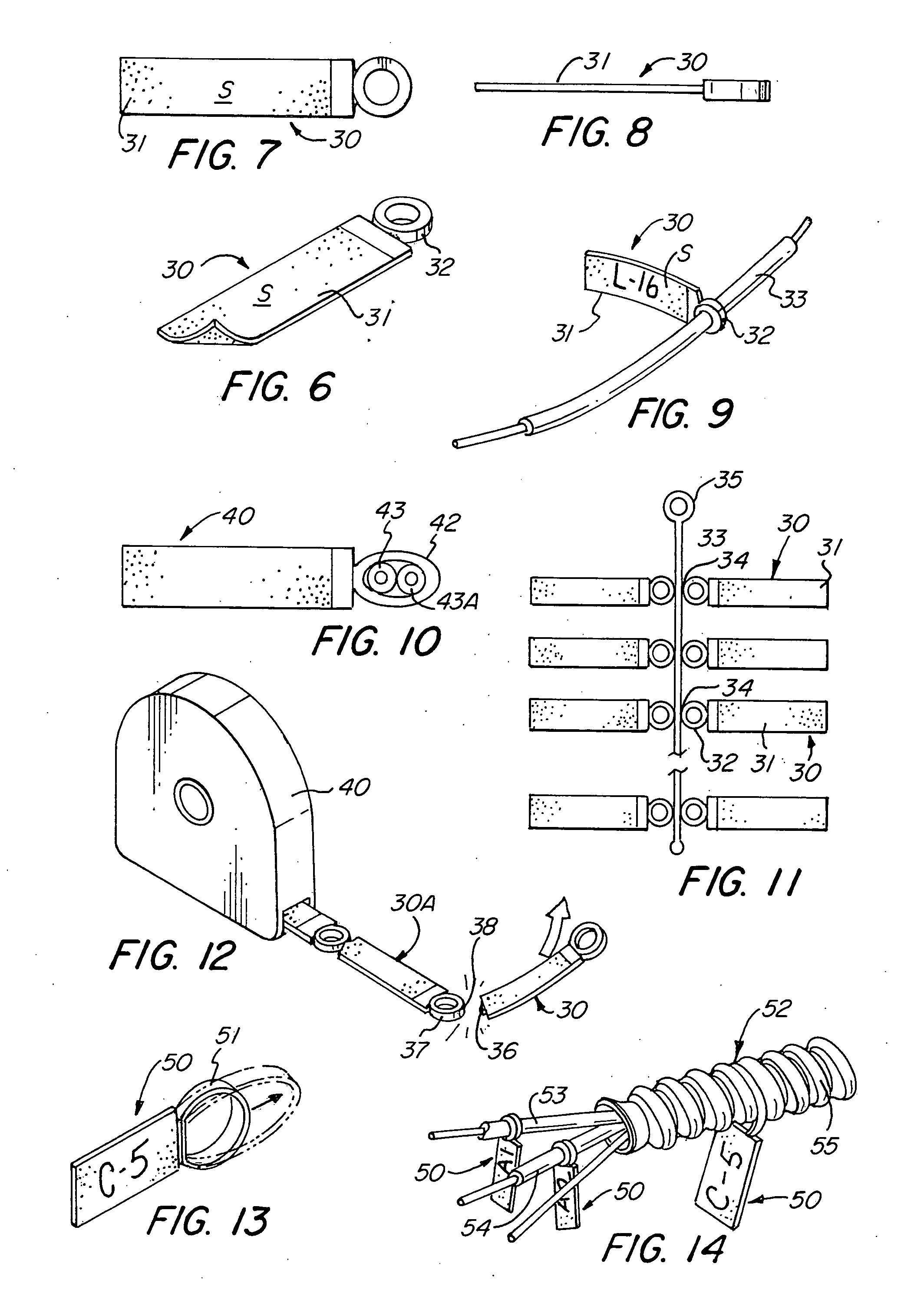Wire/cable identification device
a technology of identification device and wire/cable, which is applied in the direction of identification means, cables, insulated conductors, etc., can solve the problems of ineffective identification, considerable difficulties, and inconvenient production, and achieves the effect of simple structure and easy production
- Summary
- Abstract
- Description
- Claims
- Application Information
AI Technical Summary
Benefits of technology
Problems solved by technology
Method used
Image
Examples
Embodiment Construction
[0030]Referring to the drawings, there is illustrated in FIGS. 1 to 5, a first embodiment of the invention. As shown in FIG. 1, the wire identifier 20 is illustrated as applied to an electrical connector 21 of any standard or known construction. Such electrical connectors generally have a connector body 21A formed with an inlet end portion 21B, an outlet end portion 21C and a bore 21D extending therethrough. Such electrical connectors are arranged to receive a wire conductor, cable or the like as exemplified in U.S. Pat. Nos. 2,744,769; 1,483,218; 6,555,750 B2, and other patents that are used to connect associated wire conductors or cables to a knock-out hole of an electric box or panel. Generally, the known connectors include a radially outwardly extending flange 22 circumscribing the connector body 21 intermediate the inlet end portion 21B and the outlet end portion 21C to limit the insertion of the connector body through a knock-out hole of an electric box or panel. In the illust...
PUM
| Property | Measurement | Unit |
|---|---|---|
| non-electrical conducting | aaaaa | aaaaa |
| color code | aaaaa | aaaaa |
| sizes | aaaaa | aaaaa |
Abstract
Description
Claims
Application Information
 Login to View More
Login to View More - R&D
- Intellectual Property
- Life Sciences
- Materials
- Tech Scout
- Unparalleled Data Quality
- Higher Quality Content
- 60% Fewer Hallucinations
Browse by: Latest US Patents, China's latest patents, Technical Efficacy Thesaurus, Application Domain, Technology Topic, Popular Technical Reports.
© 2025 PatSnap. All rights reserved.Legal|Privacy policy|Modern Slavery Act Transparency Statement|Sitemap|About US| Contact US: help@patsnap.com



